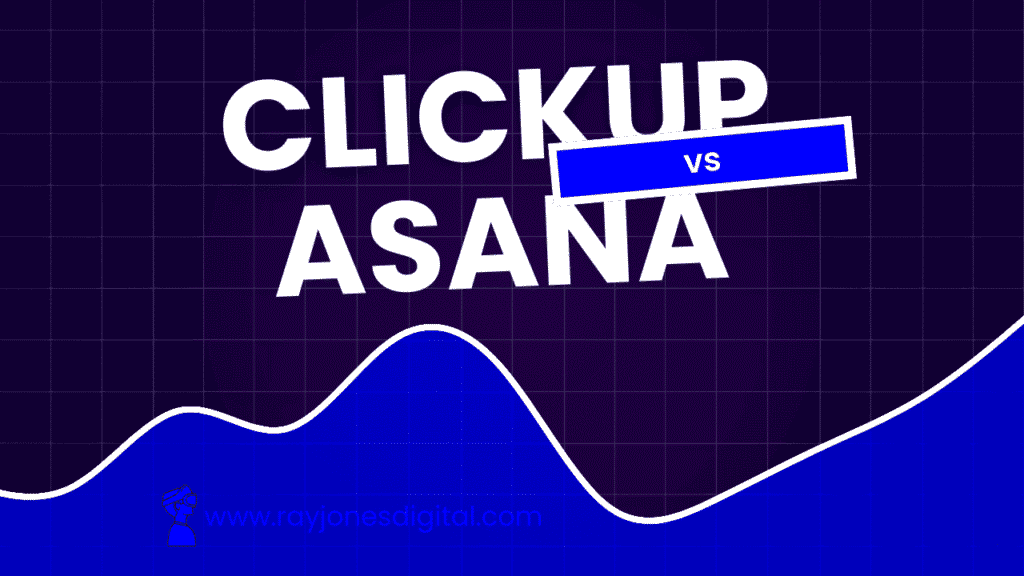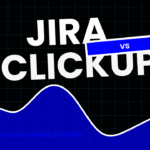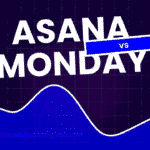
Project management tools have become essential for teams seeking to organise workflows, track progress, and collaborate effectively. Two platforms leading the charge are ClickUp and Asana—but they approach project management from distinctly different angles.
This comprehensive comparison examines both platforms across crucial factors: functionality, pricing, user experience, and practical applications. You’ll discover which project management solution aligns with your team’s specific needs, whether you’re a startup managing simple workflows or an enterprise handling complex, multi-departmental projects.
What is ClickUp?
ClickUp positions itself as the all-in-one productivity platform that aims to replace multiple tools. The platform combines project management, document creation, time tracking, and team communication into a single comprehensive workspace.
Built with customisation at its core, ClickUp offers extensive configuration options that allow teams to tailor their workspace to match specific workflows. This flexibility makes it appealing to organisations with unique processes or complex project requirements.
Key ClickUp Features
Customisable Views: Switch between List, Board, Gantt, Calendar, and Timeline views to visualise projects in the format that works best for your team.
Hierarchy System: Organise work through Spaces, Projects, Lists, and Tasks, providing clear structure for large organisations with multiple departments.
Built-in Time Tracking: Monitor time spent on tasks directly within the platform, eliminating the need for separate time tracking tools.
ClickUp Docs: Create, edit, and collaborate on documents without leaving the platform, with real-time editing capabilities.
Custom Fields: Add specific data fields to tasks, enabling detailed project tracking and reporting tailored to your industry.
Automation: Set up recurring tasks, status updates, and notifications to reduce manual work and ensure consistency.
What is Asana?
Asana takes a more focused approach to project management, emphasising simplicity and ease of use without sacrificing powerful features. The platform excels at helping teams coordinate work, track progress, and maintain visibility across projects.
Rather than attempting to be everything to everyone, Asana concentrates on core project management functionality executed exceptionally well. This philosophy makes it particularly attractive to teams seeking reliable project coordination without overwhelming complexity.
Key Asana Features
Project Templates: Access pre-built templates for common project types, from product launches to content calendars, enabling quick setup.
Timeline View: Visualise project dependencies and deadlines through intuitive Gantt charts that update automatically as tasks change.
Goals and Portfolios: Track high-level objectives and monitor multiple projects simultaneously through portfolio dashboards.
Proofing: Review and approve creative assets directly within tasks, streamlining feedback cycles for design and content teams.
Workload Management: Balance team capacity by visualising individual workloads and redistributing tasks as needed.
Advanced Search: Find specific tasks, projects, or conversations quickly using sophisticated search and filtering capabilities.
Ease of Use Comparison
ClickUp User Experience
ClickUp’s extensive customisation options create a double-edged sword. Teams can configure the platform to match their exact needs, but this flexibility comes with complexity that can overwhelm new users.
The initial setup process requires significant time investment as teams explore features and establish their preferred workflows. However, once properly configured, ClickUp becomes incredibly powerful for teams with specific requirements.
The interface can feel cluttered due to the sheer number of available features, though recent updates have improved navigation and visual organisation.
Asana User Experience
Asana prioritises intuitive design and straightforward navigation. New users can typically begin managing projects within minutes of account creation, thanks to clear onboarding flows and sensible defaults.
The platform strikes an excellent balance between powerful features and accessibility. Teams can start with basic functionality and gradually adopt more advanced features as their needs evolve.
The clean, uncluttered interface makes it easy to focus on actual work rather than wrestling with the tool itself.
Winner: Asana wins for immediate usability and team adoption, while ClickUp offers superior customisation for teams willing to invest setup time.
Feature Depth and Versatility
ClickUp’s Comprehensive Toolkit
ClickUp’s ambitious scope includes features that extend well beyond traditional project management. The platform incorporates mind mapping, whiteboarding, email management, and even basic CRM functionality.
This breadth makes ClickUp appealing to teams seeking to consolidate multiple tools, though some features feel less polished than dedicated alternatives. The time tracking functionality, for example, works well but lacks the sophistication of specialist time tracking tools.
Asana’s Focused Excellence
Asana concentrates on core project management capabilities, executing them with exceptional polish. The platform’s strength lies in reliable task management, clear project visibility, and seamless team coordination.
Recent additions like Goals and Portfolios demonstrate Asana’s commitment to expanding thoughtfully rather than adding features for the sake of completeness. Each new capability integrates naturally with existing functionality.
Winner: ClickUp provides broader functionality, while Asana offers more refined execution of core project management features.
Pricing and Value Proposition
ClickUp Pricing Structure
ClickUp offers competitive pricing with generous free and paid tiers:
- Free Plan: Unlimited tasks, 100MB storage, basic features for teams up to 5 members
- Unlimited Plan (£5/user/month): Unlimited storage, advanced features, integrations
- Business Plan (£9/user/month): Advanced time tracking, custom fields, advanced automations
- Enterprise Plan (£19/user/month): White labelling, advanced permissions, dedicated support
The free plan provides substantial value for small teams, while paid plans offer comprehensive functionality at reasonable rates.
Asana Pricing Structure
Asana’s pricing reflects its focus on core project management:
- Basic Plan: Free for teams up to 15 members, essential project management features
- Premium Plan (£8.63/user/month): Timeline view, custom fields, advanced search, forms
- Business Plan (£19.27/user/month): Portfolios, workload management, advanced integrations
- Enterprise Plan (custom pricing): Advanced admin controls, data export, priority support
Asana’s free tier accommodates larger teams than ClickUp’s, making it attractive for growing organisations.
Winner: ClickUp offers better value for feature-rich requirements, while Asana provides more generous free access for larger teams.
Specific Use Case Performance
Agile Development Teams
ClickUp excels with agile development workflows through customisable sprint boards, burndown charts, and detailed task hierarchies. The platform’s flexibility allows teams to adapt it to various agile methodologies.
Asana offers solid agile support through board views and task dependencies, though it lacks some specialised agile features like burndown charts and story point tracking.
Creative Teams
ClickUp provides comprehensive creative project management through time tracking, client collaboration features, and custom workflows for creative processes.
Asana shines with its proofing functionality, allowing creative teams to review and approve assets directly within tasks, streamlining feedback cycles significantly.
Marketing Teams
ClickUp handles marketing campaigns well through its campaign templates, content calendars, and integrated communication tools.
Asana offers excellent marketing project coordination through its timeline view, campaign templates, and clear visibility across multiple concurrent projects.
Remote Teams
ClickUp supports remote work through comprehensive communication features, document collaboration, and detailed activity tracking.
Asana facilitates remote coordination through clear project visibility, status updates, and intuitive progress tracking that keeps everyone aligned.
Integration and Ecosystem
ClickUp Integrations
ClickUp provides extensive integration options:
- Over 1,000 integrations through Zapier
- Native connections to major tools like Slack, Google Workspace, and Microsoft Teams
- API access for custom implementations
- Email integration for task creation and updates
Asana Integrations
Asana offers thoughtful integration selections:
- 200+ direct integrations with popular business tools
- Strong connections to creative tools like Adobe Creative Cloud and Figma
- Comprehensive API for custom development
- Power-user integrations for advanced workflow automation
Winner: ClickUp provides more integration options, while Asana focuses on high-quality connections to essential business tools.
Customer Support and Learning Resources
ClickUp offers comprehensive support through live chat, extensive documentation, and active community forums. The platform provides regular webinars and training sessions due to its complexity.
Asana provides excellent support through multiple channels, including email, chat, and phone support for paid plans. The platform offers clean, well-organised documentation and helpful onboarding resources.
Making Your Choice
Choose ClickUp if you:
- Need extensive customisation to match complex workflows
- Want to consolidate multiple tools into one platform
- Require advanced time tracking and reporting capabilities
- Have the time and resources to invest in proper setup
- Value feature breadth over simplicity
Choose Asana if you:
- Prioritise ease of use and quick team adoption
- Focus primarily on core project management needs
- Want reliable, polished functionality over extensive features
- Work with creative teams requiring proofing capabilities
- Prefer intuitive design and straightforward navigation
Combining Both Tools for Maximum Impact
Some organisations successfully use both platforms strategically. ClickUp might handle complex, technical projects requiring extensive customisation, while Asana manages straightforward projects and cross-team coordination.
Consider starting with free trials of both platforms to understand how they fit your specific workflows. Focus on your team’s actual needs rather than comprehensive feature lists when making your decision.
The Future of Project Management
Both platforms continue evolving rapidly, with ClickUp expanding its feature set and Asana refining its core functionality. The choice between them often comes down to philosophy: comprehensive customisation versus focused excellence.
Successful project management depends more on consistent usage and clear processes than on having every possible feature. Choose the platform that your team will actually use effectively, then focus on developing strong project management practices that complement your chosen tool.
The most effective approach combines the right tool with proper training, clear processes, and regular evaluation of what’s working for your specific team dynamics and project requirements.

I am Ray Jones Digital
My current occupations: a Digital Marketer, Local SEO expert, Link Builder, and WordPress SEO specialist. Shopify SEO, Ecommerce Store Management, and HTML & WordPress Developer I have been practicing the above mentioned services for more than 10 years now As an SEO expert working with your ongoing projects.



